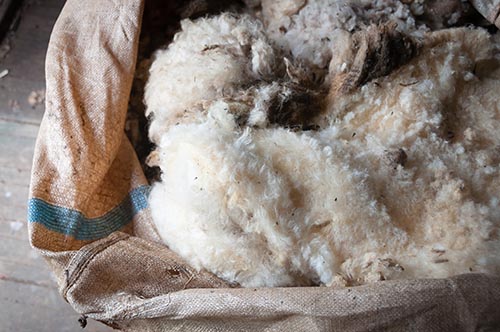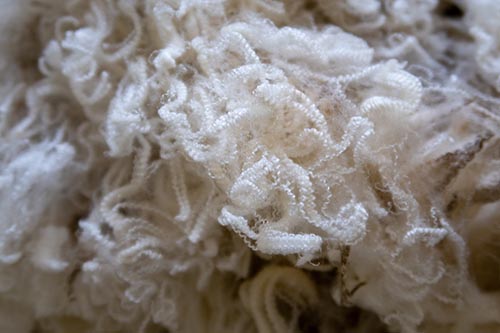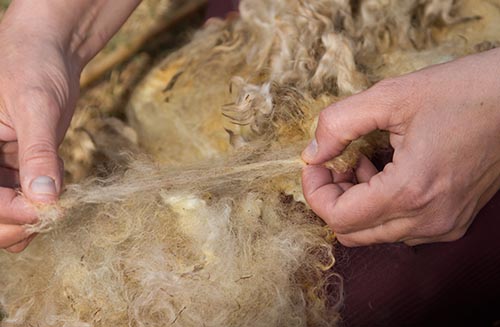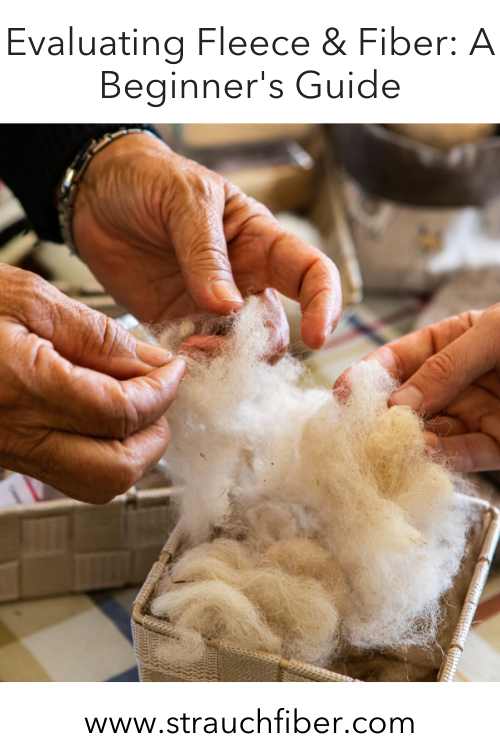Do you speak fiber? There are many words specific to evaluating, preparing and processing fiber – and if you are newer to the fiber arts scene, it might seem like a foreign language! Today, we’ll talk about what to look for when shopping for fleece and fiber, and share some of the most commonly-used terms that you may encounter in the process.

If you are sourcing fleece or fiber directly from the source, is possible that you will see it prior to being skirted and/or scoured. Skirting the fleece refers to the process of removing stained or damaged fibers, vegetative matter (VM for short), and second cuts (very short pieces of fleece remaining in the fiber, caused by shearing the same area twice). Scouring a fleece describes the process of cleaning these fibers to remove grease, dirt and debris. Even if you are purchasing a “clean” fleece, we strongly recommend washing these fibers prior to both storage and use, as any lingering grease can attract pests and damage fiber processing equipment (more on that here).
Aside from the cleanliness of the fiber, here are a few more things to look for before making your purchase:

- Crimp: This is the natural wave that runs along the fiber shaft; extremely fine fibers have 12 crimps or more per inch, while rougher fibers have 3 crimps or fewer per inch.
- Fiber Diameter: Directly affects the softeness of the fiber. This is measured in microns, a unit of measurement that is equal to .00004 inch; the lower the micron count, the softer the fiber.
- Loft: This refers to the airiness of the fiber, and while there is not an established system to measure this quality, the loft of a fleece or fiber relates to the softness and warmth. High loft is thick and fluffy, low loft is thin and dense. The higher the loft, the better the insulation characteristic.
- Luster: Describing the shininess of the fiber, luster refers to the amount of light that is reflected, from very shiny (reflecting a lot of light) to matte (reflecting little to no light), with semi-lustrous fibers in the middle. The luster of a fleece is easy to assess at a glance.
- Staple Length refers to the average length of a single length of fiber in its natural, unprocessed form, and it influences the loft and handle of the yarn you produce based on twist per inch needed. We cover staple length in greater detail on this blog post.
- Tensile strength: If the fiber breaks easily when you are handling it (and don’t be afraid to give it a tug to test its strength!), that indicates a weakness in the fiber.

When taken together, the above qualities contribute to the overall uniformity of the fleece, which is desirable for producing a consistent yarn once the fiber is processed. From there, personal preference will play a part in the fibers you select, and we encourage you to explore the many types of fleece and fiber available on today’s market. The possibilities are endless!
We’d love to see what you’re carding and spinning over on Instagram – be sure to share your photos using the #strauchfiber hashtag.
Love this post? Pin it!
